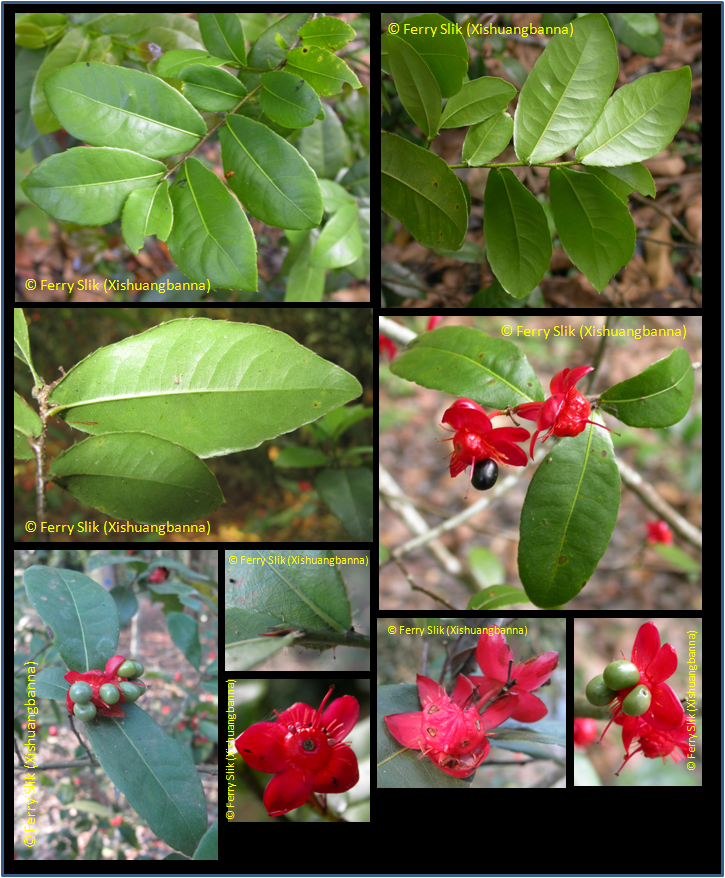Ochna integerrima (Lour.) Merr., Trans. Amer. Philos. Soc., n.s., 24(2): 265-266 265 (1935)
Latin for '?'Synonyms
Elaeocarpus integerrimus Lour.
Ochna harmandii Lecomte
Description
Small trees or shrubs, 2-7 m tall, 6-16 cm d.b.h., deciduous. Branchlets gray-brown, glabrous. Stipules 2-7 mm, soon
deciduous; petiole 2-5 mm; leaf blade elliptical, obovate-oblong, or obovate-lanceolate, 7-19 กม 3-5.5 cm, base
broadly cuneate, margin serrate, apex acute or obtuse; midvein prominent on both surfaces. Inflorescence corymbose,
ca. 4 cm, on short branchlets. Flowers ca. 3 cm in diam., on 1.5-3 cm pedicels. Sepals oblong, 1-1.4 cm, apex obtuse,
reflexed during anthesis, red in fruit. Petals 5(or 7), ovate, 1.3-2 cm, apex obtuse or rounded. Stamens 3-whorled,
0.9-1.2 cm; filaments 5-8 mm. Ovary 10-12-locular; style terete; stigma slightly lobed. Drupes 10-12 กม 6-7 mm, base
slightly curved, apex obtuse. [Flora of China]
Ecology
Rocky valley sides, wet areas by streams; 300-1400 m. This species is found mainly in deciduous forests in SE Asia.
Uses
The root can be used as a cathartic for treating worms and as a medicine for treating lymphatic disorders.
It is also grown for decorative purposes.
Distribution
From Pakistan to Southrn China and the Southeast Asian mainland.
Local names
China: Jin lian mu.
